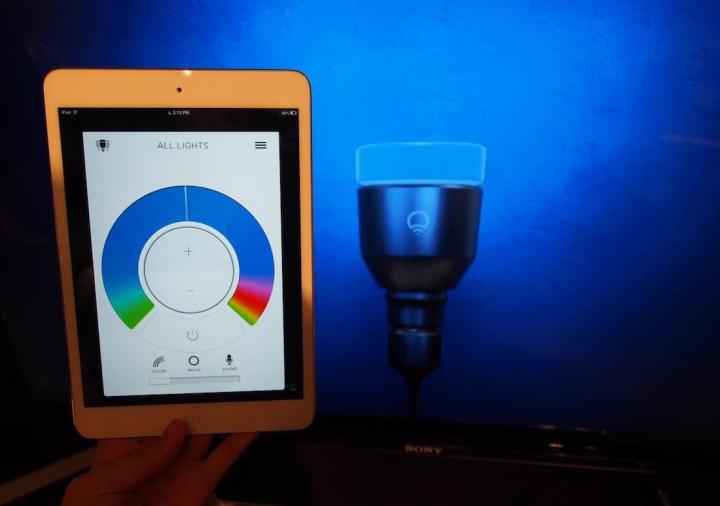
That was last September. Like other viral Kickstarter products, such as the Pebble smartwatch and Ouya, LIFX was forced to repeatedly push back its final shipment date as it encountered unforeseen challenges. When the company was set to appear at CE Week in New York City, we thought we were going to finally see the long-awaited physical product. Alas, its latest batch missed a few components and made them unready for show. Instead, we were given a demo of the user interface and features on LIFX’s app.

Since each bulb has its own Internet connectivity, it can learn to adjust brightness levels to match the seasons. For example, during summers when days get dark later, the bulbs can automatically lower brightness to help save energy. LIFX is planning to collect this type of usage data and provide users with a visual graph to help them identify consumption behavior.
We found the LIFX app interface very user friendly with its giant color wheel that lets users drag or tap the right shade at the preferred brightness level. It’s even got a separate wheel for gradients of white, so you can pick between icier hues or something more yellow and warm.

With the app, users can set scenes, alarms, gradual dimming, and various commands to correspond light colors with external updates. Some of these features mirror those of the Hue’s, such as custom color notifications. For instance, you can set blinking orange for new Instagram Likes, or turning yellow for e-mails from your boss. Unlike the Hue, the LIFX app contains a built-in “Sound” mode that can change the lights to music played from your phone, or from ambient noise picked up from its microphone.
LIFX boasts a bulb life span of a whopping 40,000 hours – a far cry from the Hue’s 15,000 hours, CFL’s 12,000 hours, regular incandescent’s 1,000 hours. There are no starter packs, since each LIFX bulb sells individually for $79 during the pre-order phase. After the Kickstarter and second batch ship by September, LIFX will bump the price up another $10, although those who buy in bulk will get a discount. At the moment, you can order LIFX bulbs on its official website, but the product plans to hit retailers like Best Buy by the holiday season.

“Of course there are hurdles, every day there’s a new learning curve,” LIFX’s manager of operations Michael Krypuy tells me. “Adjusting the bulbs to work with different lighting standards around the world was a big challenge.” Although LIFX’s founders do not have backgrounds in industrial design and manufacturing, the startup environment pushes the team to work hard and perform as well as established companies.
While the LIFX bulbs may not have the support from big names like Apple (which prevents the LIFX from using features like iOS geolocation and IFTTT for the moment), it’s got tons of potential to truly rival its biggest competitor on the market. The LIFX is up for pre-order today for $79 a bulb, and is available in an Edison, Bayonet, or a Downlight screw. The app will be compatible with both Android and iOS, and you can sync multiple devices to a single bulb.


